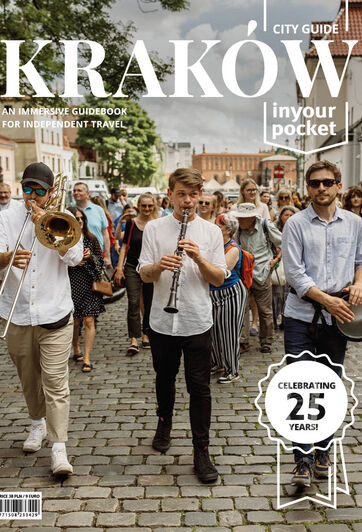Built in 1894 by famous painter Włodzimierz Tetmajer, this small manor house and modest museum in the Kraków suburb of Bronowice Małe, is integral in the history of Kraków's secessionist-era Młoda Polska art movement, and was the backdrop of one of its most important literary works - Stanisław Wyspiański's play 'Wesele' (The Wedding). Based on the real life wedding of the poet-aristocrat Lucjan Rydel to his young peasant bride (marrying into the peasant class was a curious fashion of Kraków's intelligentsia at the time), Wyspiański's 1901 drama describes the drinking, dancing, feasting, fornicating, philosophising and arguing at his friend's wedding reception - which took place in this very home - as a way of examining the partitioned country's political climate, which Wyspiański criticises and condemns as unprepared for independence.
Required reading for Polish grade-schoolers, the influential play is such a classic that the house most of the action takes place in has been open to the public since 1969. Visitors will get a guided tour of the small downstairs, learning the history of the home and the families who lived here, while seeing its collection of original folk furnishings, period photos, memorabilia, and fantastic turn-of-the-century artwork by the famous personalities connected to the site. While for Poles Rydlówka is an important historical site, for tourists who don't already have a healthy knowledge of and interest in Wyspiański's play - or the Młoda Polska movement he and his contemporaries were a part of - this village villa is certainly skippable. Still, those who make the trip can expect a charming and rewarding cultural adventure.
The best way to get there is by car, but taking trams 4, 8 and 24 all the way to the end ('Bronowice Małe' stop) will get you close.
Average visiting time: 1 hour.
Rydlówka
Open
Open 09:00-16:00. Thu 09:00-18:00, Closed Mon, Sun.
Price/Additional Info
Admission 18/14zł. Tue free.Associated Venues
/krakow/krzysztofory-palace-museum-of-krakow_17083v
This 17th century Baroque palace on the market square houses the main branch of the Kraków History Museum, recently renamed the Kraków
/krakow/eagle-pharmacy_16498v
When the Nazis created the Jewish ghetto in Podgórze in 1941,
/krakow/nowa-huta-museum_104304v
*Closed for renovation works until 2028.
Formerly the 'PRL Museum,' thi
/krakow/ulica-pomorska-former-gestapo-cells_80950v
Consisting of two separate exhibits, Ulica Pomorska offers the most chilling museum experience in Kraków (which is saying something). Located in the Dom Śląski, or ‘Silesian House,’ this infamous building became the Kraków headquarters of the Gestapo


_m.jpg)
_m.jpg)
_m.jpg)

Comments
Me
Website url is out of date, please use http://www.rydlowka.com/rydlowka
Editor IYP
This place is tricky to find. Look for a small sign on ul. Tetmajera directing you uphill to the property which isn't actually directly on the street. There's a gate which is locked from the outside but this doesn't mean the museum is closed. Simply reach around to the inside and let yourself in.
Van Rambler
Visitors may also get the chance to meet Pani Maria Rydlowa, wife of the poet's grandson, who still lives upstairs. A gracious and charming old lady, she spoke to us for several minutes about the importance of the site and its small place in history. I am not positive, but I believe the young woman who gave us the tour may have been her grand-daughter as well. The museum is small and the tour is short - only 15-20mins. I haven't read the play, but I enjoyed our visit. The area, though now a suburb of Kraków, still feels like a village and is a nice place to walk around.